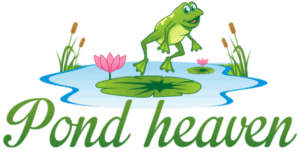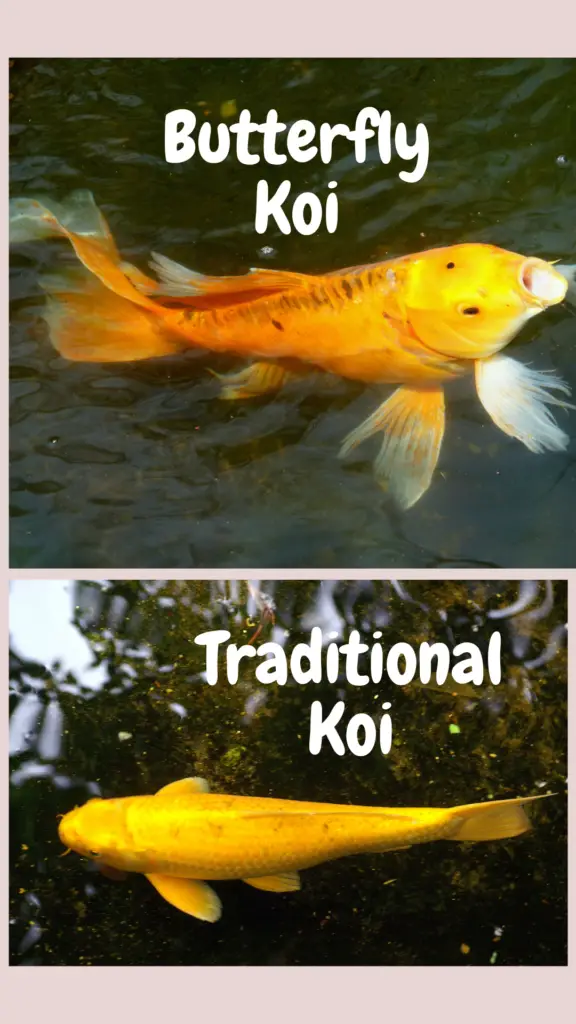
Butterfly Koi is a variety of koi species that have elongated finnage, which differentiates them from traditional koi. There are, however, American and Japanese purists who disagree that this relatively new breed should be considered real koi at all.
The butterfly koi breed started in the early 1980s and is considered a real koi species. Judging standards for butterfly koi have yet to be finalized in America. Still, they are used as guidelines by breeders, judges, and fanciers to level the playing field in this new industry.
So why do some American and Japanese purists call this long-finned breed of koi mutts? They have the same coloration, patterns, and behavior as traditional koi, and their care requirements are much the same. The answer lies in the canals of Indonesia, where a carp with a genetic mutation resides.
Pro Tip: If you’re tired of wasting money and making costly mistakes on the koi-keeping hobby or are thinking about buying koi fish but don’t know where to start, I strongly suggest you check out this ebook. I recently read this ebook, and it contains SO much useful information, such as:
- 3 proven steps to identify koi fish diseases
- WARNING: 3 things you should NEVER do when it comes to caring for koi
- When to seek professional help when it comes to looking after your koi
What Is The Origin Of The Butterfly Koi
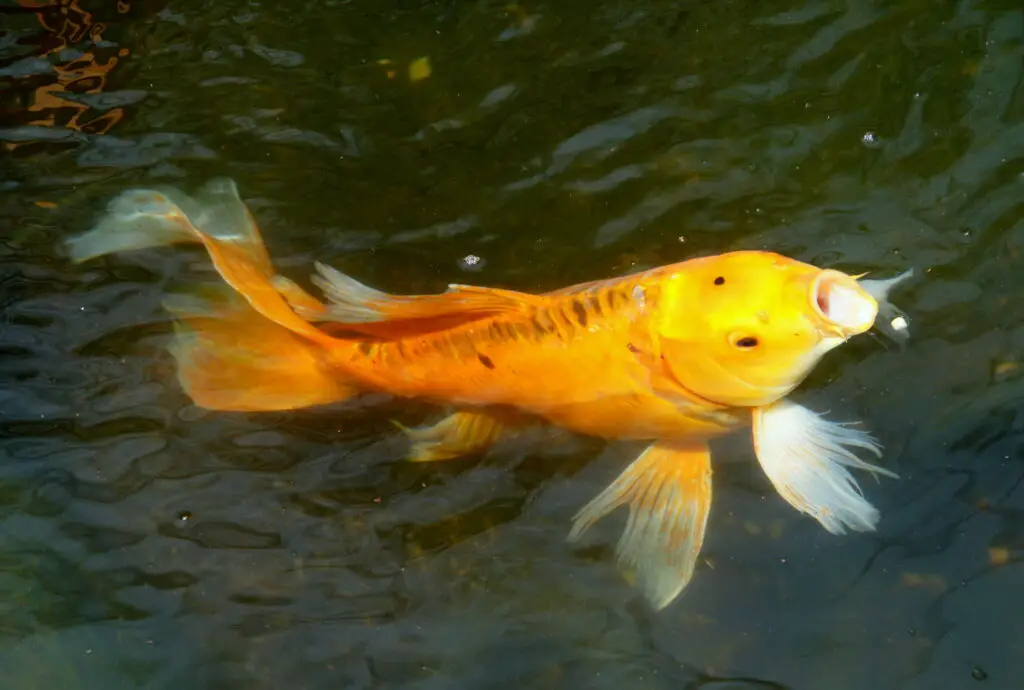
Butterfly koi are the product of selective crossbreeding of traditional koi and long-finned carp. The long-finned carp were sourced from the waterways of Indonesia, their coloration being dull gray or brown, but their fin length was impressive.
The idea for crossbreeding traditional koi with long-finned carp is said to have been that of Crown Prince Akihito. In July of 1977, he visited Saitama Prefectural Fisheries Experiment Station in Japan and offered his suggestion. Saitama Prefectural Fisheries Experiment Station started with the crossbreeding project in the early 1980s, and by 1982, the domesticated ornamental koi species was born.
Blue Ridge Fish Hatchery in North Carolina was the first fish farm in America to start the crossbreeding process of butterfly koi. They started independently but concurrently to Saitama Prefectural Fisheries Experiment Station. Under the watchful eye and persistence of koi breeder Wyatt LeFever, Blue Ridge was able to create a new breed of koi.
The butterfly koi species have the vibrant coloration patterns of traditional koi, but they boast the extra-long finnage of the Indonesian long-finned carp. Randy LeFever, son of Wyatt LeFever, is credited for giving them the name “Butterfly Koi” when he said they reminded him of butterflies.
Butterfly Koi Vs. Traditional Koi

Butterfly koi are like traditional koi in many respects, such as size, behavior, coloring, longevity, and general appearance. Their characteristic differences are tabulated below:
| Butterfly Koi | Traditional Koi | |
| Finnage | The genetic mutation in butterfly koi means the fins never stop growing. Fins can exceed traditional breed standards by as much as 1000%. | Genetic fin length is specified. |
| Body Shape | Torpedo-shaped, wide at the shoulders with a smooth transition to the tail. Skinnier than traditional koi. | Oval-shaped. |
| Barbels | Slightly longer than average barbels. | Average barbels. |
Different Types Of Butterfly Koi
As with traditional koi, butterfly koi are available in an assortment of colors and with different patterns. They are also called long-fin koi or dragon koi. Blue Ridge Fish Hatchery has managed to breed the long fins into most of the traditional koi varieties, some of which are listed below:
- Asagi
- Kumonryu
- Kahaku
- Utsurimono
- Sanke
- Sargoi
- Showa
- Shusui
Blue Ridge obtained some of the Japanese long-fin koi and interbred them with their own varieties, resulting in some beautiful new patterns and colors with a metallic underlay. You can read about Blue Ridge’s original butterfly koi story here.
The Judging Standards Of Butterfly Koi
As previously stated, the judging rules for butterfly koi are currently being developed and are not yet completed. It is because the species is just roughly 40 years old that this is the case.
With the help of private-sector Joe Burkard (President of Pan Incorporated in Kenmore, Washington) and Myron Kloubec, president of Kloubec Fisheries in Amana, Iowa, the Associated Koi Clubs of America judges Peter Ponzio, Larry Christiansen, and Joe Pawlak (President of Blackwater Creek Koi Farms Incorporated) have helped to draft basic butterfly koi standards.
After inspecting many butterfly koi – or longfin as they call them – they devised AKCA-backed judging rules that address the body shape, color, and fin length of the new breed. The following list is a summary of their more detailed AKCA standards for judging butterfly koi that was drawn up after a seminar on longfin in June 2007:
- Fins should be long and wide, extending past the dorsal fin’s commencement.
- The body should be torpedo-shaped, with broad shoulders that elegantly transition to the tail.
- The colors of the butterfly koi should be vibrant, and the patterns should be distinct.
- More weight is given to colors and patterns when judging koi smaller than 10 inches.
Other points to note are:
- The more adequately defined the position of the colors and patterns, the more valuable the butterfly koi will be.
- As the butterfly koi ages, the fins become more elongated, increasing the value of the fish.
There has still been no formal training for judges, so a points system is utilized when judging butterfly koi.
How Much Is A Butterfly Koi?
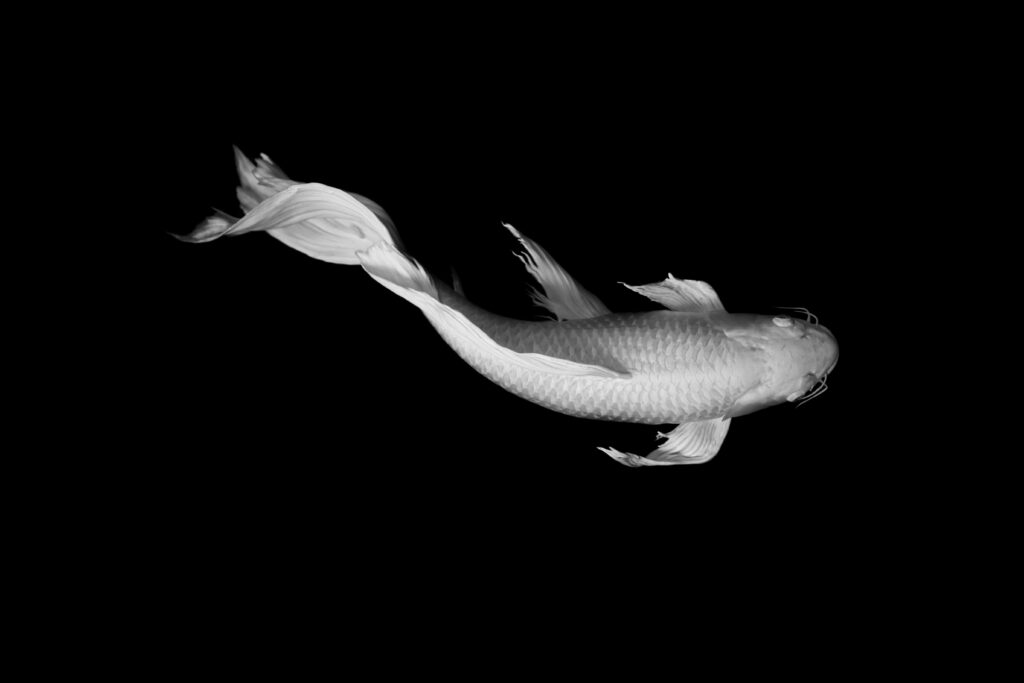
The price of a butterfly koi depends on its size and type and, of course, where you purchase it.
Some examples of prices from breeders are below:
| Size | Jones Fish | Kloubec Koi | Hanover Koi Farms |
| 3″ – 4″ | $16/each | – | – |
| 5″ – 6″ | $36/each | $69.99/each | – |
| 7″ – 8″ | $70/each | $119.99/each | $149.99 |
| 9″ – 10″ | – | $249.99/each | $199.99 |
| 11″ – 12″ | – | $399.99/each | $399.99 |
Care And Handling Of Butterfly Koi
Butterfly koi require the same care and treatment as traditional koi. While butterfly koi are theoretically a bit hardier than traditional koi because of their hybrid genes, caution ought to be taken when handling or netting them to reduce the chance of damaging their fins. Their fins can be easily bent or torn, and the damage can be permanent, resulting in waves and bends in the fins.
Butterfly koi – like traditional koi – require aerated, clean water, enough space to swim, shelter from the sun and predators, and they need to be well-fed. They are docile and can be kept with regular koi and other fish, and even turtles if particular care is taken.
How Long Do Butterfly Koi Live?
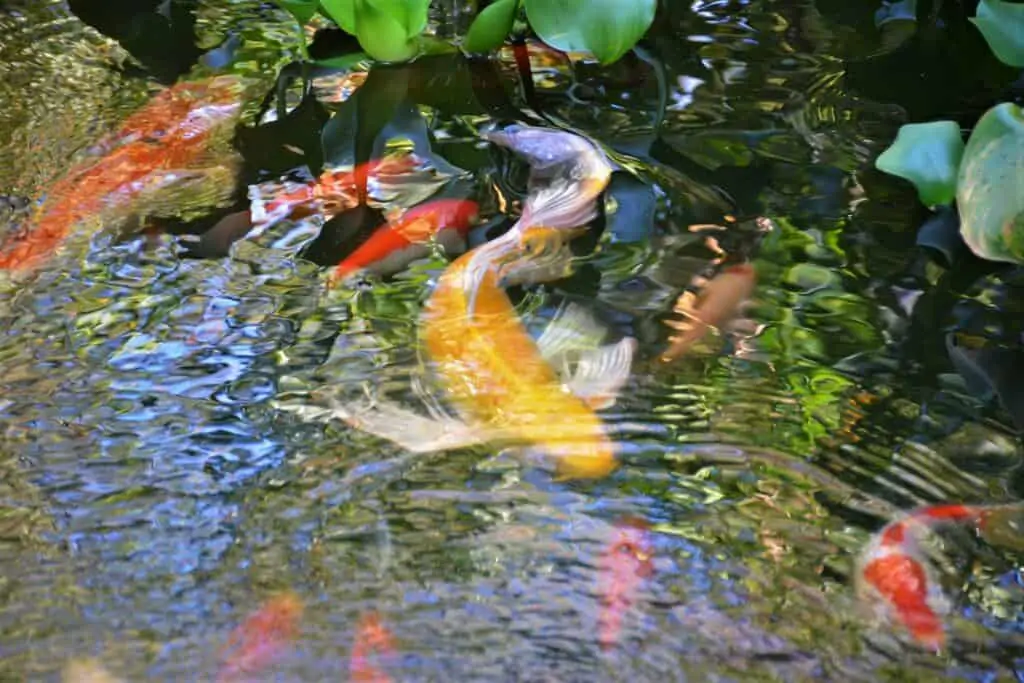
Under the right conditions, a butterfly koi can live as long as a regular koi, which is about 30 years. Due to the breed being relatively new, the longevity of butterfly koi has yet to be ascertained. It would be very interesting to find out if they inherit the hardiness of their long-finned carp ancestors and live longer than traditional koi.
Conclusion
Butterfly koi are a relatively new breed of koi on the market that has resulted from crossbreeding long-finned carp with traditional koi. These long-finned beauties are gaining recognition as a real breed of koi and are appreciated for their flowing finnage that looks ever so graceful in the water. The crossbreeding options are ever-growing, adding a new dimension to the domesticated ornamental fish market.
References
https://en.wikipedia.org/wiki/Butterfly_koi
https://www.researchgate.net/publication/232876925_Inheritance_of_Long_Fins_in_Ornamental_Koi_Carp
